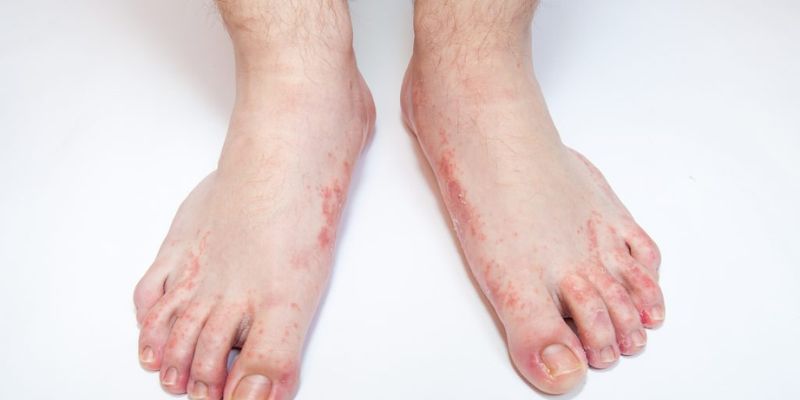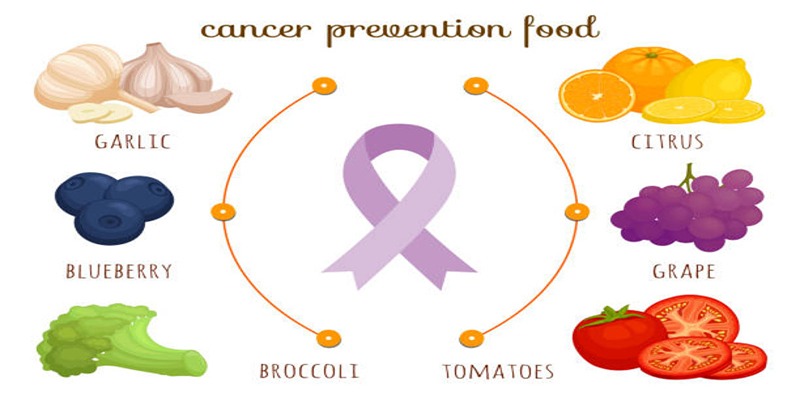If you or your child suffers from food allergies, you know how serious and disruptive they can be. Unfortunately, food allergies are on the rise, with data showing that from 1997-2011 there was a 50% increase in food allergies among children alone. So what exactly are these common food allergies?
In this blog post, we'll take an in-depth look at some of the most common types of food allergies—what foods to watch out for, their symptoms, and what to do if someone experiences an allergic reaction—to help ensure that everyone can enjoy meals safely.
What are Food Allergies, and How Do They Affect People?
Food allergies are an adverse immune system reaction to a particular food or ingredient. The body flags the food as harmful and releases histamine and other chemicals, causing skin inflammation, airways, the digestive system, and other organs.
This process often leads to uncomfortable and sometimes life-threatening symptoms in those affected.
Common food allergies include milk, eggs, peanuts, tree nuts (such as cashews and walnuts), wheat, soy, fish, and shellfish. Depending on the severity of the allergy, a reaction can range from mild skin issues to anaphylaxis—a severe form that narrows airways and can lead to shock or death.
Identifying the Most Common Food Allergies
Food allergies affect millions of people worldwide, and while it can sometimes be difficult to determine which foods may trigger an allergic reaction, certain food allergens appear more often than others.
The eight most common food allergies include:
Peanuts

Peanuts are a type of tree nut that is highly allergenic and can cause severe reactions, even if consumed in trace amounts. Symptoms may include itching, swelling of the lips and tongue, difficulty breathing, nausea, or vomiting.
Tree Nuts

Tree nuts such as walnuts, almonds, and cashews are also highly allergenic and can cause anaphylaxis in certain individuals. Other tree nuts include pecans, hazelnuts, pine nuts, and Brazil nuts. Symptoms of an allergic reaction may include itching, swelling of the lips and tongue, difficulty breathing, nausea, or vomiting.
Milk
Milk is a common allergen that can cause various symptoms, including abdominal cramps, diarrhea, hives, and skin rashes. Milk allergy is most often found in infants and young children.
Eggs
Egg allergy is common in young children; symptoms can range from mild to severe. Symptoms may include itching, swelling of the lips and tongue, difficulty breathing, nausea, or vomiting.
Wheat
Wheat allergy is an increasingly common food allergy and can be found in adults and children. Symptoms of wheat allergies may include itching, swelling of the lips and tongue, difficulty breathing, nausea, or vomiting.
Soy
Soy allergy is relatively common in both adults and children and can cause symptoms that range from mild to severe. Symptoms may include itching, swelling of the lips and tongue, difficulty breathing, nausea, or vomiting.
Fish
Fish allergies are quite common and can be found in both adults and children. Symptoms may include itching, swelling of the lips and tongue, difficulty breathing, nausea, or vomiting.
Shellfish
Shellfish allergies are quite common among adults and can cause a range of symptoms, including itching, swelling of the lips and tongue, difficulty breathing, nausea, or vomiting.
It's important to note that other foods can cause allergic reactions, but the above eight are considered the most common. If you or your child is experiencing symptoms after eating a particular food, it's important to consult an allergist for proper diagnosis and treatment.
Understanding the Symptoms of Food Allergic Reactions
- Abdominal pain
- Cramps
- Diarrhea
- Hives or rashes on the skin
- Itching of the mouth, throat, eyes, and skin
- Swelling of the lips and tongue
- Shortness of breath or difficulty breathing
- Nausea and vomiting.
What to Do In the Event of an Allergic Reaction
If you or someone you know is experiencing any of the above symptoms after consuming a particular food, it is important to seek medical attention immediately. If available, administer epinephrine (an adrenaline injection) and call 911.
An allergist can help diagnose and treat allergies, so it's important to consult with one if you or your child is experiencing any of the above symptoms.
Tips for Avoiding and Managing Food Allergies
Read labels carefully
Read all food labels carefully and look for potential allergens.
Ask questions when dining out.
Ask restaurant staff about dish ingredients, and feel free to ask further questions if you need more clarification.
Carry medication with you at all times
If you or your child have a known food allergy, it is important to always have medication with you in case of an emergency.
Educate your family and friends
Make sure that those closest to you are aware of any food allergies so they can help you avoid potential triggers.
Create an action plan
Work with your doctor to create a personalized action plan for managing food allergies, and review it often.
Food allergies can be a serious and disruptive condition, but they can be managed effectively with the right knowledge and resources.
By familiarizing yourself with the most common types of food allergies, their symptoms, and what to do in case of an allergic reaction, you or your child can enjoy meals safely and confidently.
Practical Strategies for Reducing Cross-Contamination in the Kitchen
To reduce the risk of cross-contamination, it is important to take the following preventative measures in the kitchen:
1. Separate all food preparation surfaces and utensils: When preparing meals for someone with a food allergy, use separate cutting boards, knives, dishes, and utensils for foods containing allergens.
2. Use different preparation areas: Avoid preparing allergen-containing foods and non-allergen-containing foods in the same space.
3. Clean thoroughly: After finishing with a food allergen, clean all surfaces, utensils, and hands thoroughly before continuing with any other meal preparation.
4. Label clearly: Always keep separate containers for each allergen-containing food and label them clearly.
5. Store safely: Store allergen-containing foods in separate containers and away from other foods to prevent cross-contamination.
These simple steps can help reduce the risk of cross-contamination, making it easier for everyone to enjoy meals safely and confidently.
Resources for Those With Food Allergies - Support Groups and Online Communities
If you or your child suffer from a food allergy, many resources are available to help. Local support groups can provide valuable advice and connect you with other individuals dealing with similar allergies. Numerous online forums and communities are dedicated to supporting those with food allergies.
You can ensure everyone enjoys meals safely and confidently by educating yourself on the most common types of food allergies, understanding their symptoms, and taking steps to reduce cross-contamination in the kitchen.
Managing food allergies can become more manageable with the right knowledge and resources.
FAQs
What's the worst allergy to have?
The severity of an allergy can vary greatly from person to person, so it's difficult to pinpoint the "worst" food allergies. However, some of the most serious and potentially life-threatening allergies are related to peanuts, tree nuts, shellfish, and fish.
What are some other common food allergies?
People should be aware of other common food allergies besides peanuts, tree nuts, shellfish, and fish, including milk, eggs, wheat, and soy. Additionally, some people are allergic to certain fruits and vegetables, like apples and carrots.
What are the symptoms of a food allergy?
The most common food allergy symptom is hives or an itchy rash on the skin. Other potential signs can include swelling of the lips, tongue, and face; shortness of breath; coughing or wheezing; nausea and vomiting.
Conclusion
Living with food allergies can be extremely challenging, but it doesn't have to be impossible. Knowledge is power, and understanding the most common types of food allergies—what foods to watch out for, their symptoms, and what to do if someone experiences an allergic reaction—can make all the difference between feeling overwhelmed and feeling in control. Taking a proactive approach to recognizing and managing food allergies is key to preventing accidental allergic reactions. With a bit of preparation and the right information on hand, you can ensure that everyone can enjoy meals safely.












